#the value of biodiversity
Explore tagged Tumblr posts
Text
#importance of biodiversity#biodiversity#types of biodiversity#biodiversity for kids#what is biodiversity#education#biodiversity conservation#loss of biodiversity#why is biodiversity important#biodiversity and conservation#educational video for children#conservation of biodiversity#definition of biodiversity#importance of water#example of biodiversity#the value of biodiversity#origin of biodiversity#biodiversity definition#benefits of biodiversity
0 notes
Text
Nurturing Nature
Together for Tomorrow: Environmental Progress Report YouTube Roots of Renewal 2030 Vision Annual Report 2023 Advocacy StatementConnecting People and Nature: The Cultural Value of Afforestation Areas: Advocacy Strategy Nurturing Nature: The Vision and Achievements of Friends of the Saskatoon Afforestation Areas As a dedicated non-profit Canadian registered charity, the Friends of the…

View On WordPress
#active lifestyles#advocacy#Arbor Week#awareness campaigns#beautification#biodiversity#Canadian charity#citizen engagement#City Nature Challenge#climate change#collaborative approach#community advocacy#Community Engagement#community gathering#Community Involvement#community partners#Community Pride#community responsibility#conservation#creating connections#CULTURAL HERITAGE#cultural value#diversity#Donations#Eco-friendly Practices#Ecological conservation#ecological health#ecological significance#ecosystem services#Educational Programs
0 notes
Text
Value pf Trees
rees hold immense value for our planet and well-being. They are the lungs of the Earth, absorbing carbon dioxide and releasing oxygen, crucial for our survival. Trees provide habitat for wildlife, support biodiversity, and contribute to ecological balance. Their shade and cooling effects reduce urban heat, conserving energy. Additionally, they prevent soil erosion, purify water, and enhance soil fertility. Economically, trees yield resources like wood, fruits, and nuts. Beyond tangible benefits, trees offer mental and emotional respite, promoting psychological well-being. Recognizing their ecological, economic, and psychological significance, conserving and planting trees is vital for a sustainable and harmonious world.
#rees hold immense value for our planet and well-being. They are the lungs of the Earth#absorbing carbon dioxide and releasing oxygen#crucial for our survival. Trees provide habitat for wildlife#support biodiversity#and contribute to ecological balance. Their shade and cooling effects reduce urban heat#conserving energy. Additionally#they prevent soil erosion#purify water#and enhance soil fertility. Economically#trees yield resources like wood#fruits#and nuts. Beyond tangible benefits#trees offer mental and emotional respite#promoting psychological well-being. Recognizing their ecological#economic#and psychological significance#conserving and planting trees is vital for a sustainable and harmonious world.
0 notes
Text
"In a historic step toward the first-ever restoration of the tiger population to a nation where they were once extinct, two captive Siberian tigers have been translocated from Anna Paulowna Sanctuary, Netherlands, to the Ile-Balkhash Nature Reserve in Kazakhstan.
This remarkable event is part of an ambitious program led by the Government of Kazakhstan with support from WWF and the UN Development Program to restore the Ile-Balkhash delta ecosystem and reintroduce tigers to the country and region, where the species has been extinct for over 70 years.
“It is a high priority for Kazakhstan to work on the restoration of rare species. For ecological value it is important that our biodiversity chain is restored. And that the tiger that once lived in this area is reintroduced here,” said Daniyar Turgambayev, Vice-minister of the Ministry of Ecology and Natural Resources of Kazakhstan.
In the early 21st century, genetic studies were carried out on bones and furs held in national collections which revealed that the population of tigers living between Iran, southern Russia, Central Asia, and the areas around the Caspian Sea was extremely similar to Siberian tigers.
This led scientists to conclude that Felis vigrata, the former name of the Caspian tiger, was simply the Siberian tiger that developed into a distinct population, but not a new subspecies, over generations of being separated by habitat fragmentation.
Bodhana and Kuma, the male and female tigers, will be housed in a spacious semi-natural enclosure of three hectares [7.4 acres] within the Ile-Balkhash Nature Reserve. Any of their offspring will be released into the wild and will become the first tigers to roam Kazakhstan in decades, and potentially the first-ever international tiger reintroduction.
They will play an important role in the establishment of a new tiger population in the region where they had previously been wiped out as a result of excessive hunting.
“Today marks a monumental conservation milestone to bring tigers back to Kazakhstan and Central Asia,” said Stuart Chapman Leader of WWF Tigers Alive. “This tiger translocation is a critical step to not only bring back the big cat to its historic homeland but also to rewild an entire ecosystem.”
Progress towards restoration of the area is already well underway with recovering and reintroduction of critical tiger prey species like the Kulan (Asiatic wild ass), and reforestation of over 120 acres with native trees. Being the apex predator, tigers will play a significant role in sustaining the structure and function of the ecosystem on which both humans and wildlife rely...
“With the launch of the tiger reintroduction program, we have witnessed a significant change—the revival of nature and our village of Karoi,” said Adilbaev Zhasar, the head of the local community group Auyldastar.
“This project not only restores lost ecosystems, but also fills us with pride in participating in a historic process. Because of small grants from WWF, we have the opportunity to do what we love, develop small businesses, and create jobs in the village, which brings joy and confidence in the future.”
From the very beginning, the local community around Ile-Balkhash Nature Reserve has been closely involved in the project. This includes support for improved agricultural techniques and the future development of nature tourism in the area.
The translocation of these tigers is the first of several planned in the coming years, with a goal to build a healthy population of about 50 wild tigers by 2035, starting with this pioneering pair for breeding. This initiative is not only a testament to the resilience of the species but also a powerful example of governments, conservation organizations, and local communities cooperating in wildlife and nature conservation."
-via Good News Network, November 27, 2024
#tiger#tigers#big cats#wild cats#kazakhstan#asia#central asia#biodiversity#endangered species#conservation#rewilding#wildlife conservation#ecology#nature reserve#good news#hope
2K notes
·
View notes
Text

Clouds float over the Kikori River Delta in southern Papua New Guinea. Part of the Gulf of Papua, this coastal mangrove forest is considered one of the most important wetland regions in the Asia-Pacific due to its cultural and biodiversity value. It is a habitat for Indo-Pacific humpback and Australian snubfin dolphins, both listed as “vulnerable” on the IUCN Red List of Threatened Species.
-7.428366°, 144.428927°
Source imagery: Airbus Space
898 notes
·
View notes
Text
youtube
These Salamanders Steal Genes and Can Have up to Five Extra Sets of Chromosomes
Unisexual salamanders in the genus Ambystoma appear to be the only creatures in the world that reproduce the way they do. Researchers know how, but the why is still being figured out.
Katy Greenwald: These are all pond breeding salamanders. They are really abundant in the Great Lakes. They are gene thieves. They're stealing DNA from other species. It is known as kleptogenesis. They are usually just called the unisexual complex or the unisexual Ambystoma. They are not a species, actually, because they break all the rules of what a species should be able to do. They are a really unique lineage. As far as we know there is nothing else in the world that reproduces in this way. They are five or six million year old group of animals. As a biologist, you learn all these rules and intro bio and then you learn about these things that just break the rules. In the water, the males will produce sperm at offers, which are little sperm packets that they sort of put down on on leaves and sticks and things like that in the pond. And the females will pick those up internally in their cloaca and there's internal fertilization, and then they'll lay fertilized eggs, which will develop into larvae just like tadpoles do in frogs. And these unisex rules will be in the same ponds at the same time as these normal sexually reproducing species. And they will actually pick up the sperm at offers that are produced by the males of the other species that just triggers egg development. So their eggs are laid and they develop, but they don't actually include any of the males genetic material and they produce offspring that just have the same DNA as the mom. But a smaller proportion of the time they actually do add the males genomes, and so then the offspring come out with extra chromosomes. So they can have anywhere from two to five full sets of chromosomes from up to five different species. And these salamanders seem to have the benefits of asexuality in that they're all female. Their populations can grow really fast, but they have this mechanism to add additional genetic variation that they're able to grab from these species that they coexist with. If there's one thing that we learn from studying biodiversity, it's that there is amazing variation in nature. There are all kinds of species reproducing in all kinds of ways, using all kinds of different approaches. And I think that's something we could certainly learn from in human society, that valuing and celebrating that diversity is a great part of being a biologist...
via: https://www.scientificamerican.com/video/these-salamanders-steal-genes-and-can-have-up-to-five-extra-sets-of-chromosomes
957 notes
·
View notes
Text
« To mention the global loss of biodiversity, that is to say, the disappearance of life on our planet, as one of our problems, along with air pollution or ocean acidification, is absurd—like a doctor listing the death of his patient as one symptom among others.
The ecological catastrophe cannot be reduced to the climate crisis. We must think about the disappearance of life in a global way. About two-thirds of insects, wild mammals and trees disappeared in a few years, a few decades and a few millennia, respectively. This mass extinction is not mainly caused by rising temperatures, but by the devastation of natural habitats.
Suppose we managed to invent clean and unlimited energy. This technological feat would be feted by the vast majority of scientists, synonymous in their eyes with a drastic reduction in CO2 emissions. In my opinion, it would lead to an even worse disaster. I am deeply convinced that, given the current state of our appetites and values, this energy would be used to intensify our gigantic project of systemic destruction of planetary life. Isn't that what we've set out to do—replace forests with supermarket parking lots, turn the planet into a landfill? What if, to cap it all, energy was free?
[...C]limate change has emerged as our most important ecological battle [...] because it is one that can perpetuate the delusional idea that we are faced with an engineering problem, in need of technological solutions. At the heart of current political and economic thought lies the idea that an ideal world would be a world in which we could continue to live in the same way, with fewer negative externalities. This is insane on several levels. Firstly because it is impossible. We can't have infinite growth in a finite world. We won't. But also, and more importantly, it is not desirable. Even if it were sustainable, the reality we construct is hell. [...]
It is often said that our Western world is desacralised. In reality, our civilisation treats the technosphere with almost devout reverence. And that's worse. We perceive the totality of reality through the prism of a hegemonic science, convinced that it “says” the only truth.
The problem is that technology is based on a very strange principle, so deeply ingrained in us that it remains unexpressed: no brakes are acceptable, what can be done must be done. We don't even bother to seriously and collectively debate the advisability of such "advances". We are under a spell. And we are avoiding the essential question: is this world in the making, standardised and computed, overbuilt and predictable, stripped of stars and birds, desirable?
To confine science to the search for "solutions" so we can continue down the same path is to lack both imagination and ambition. Because the “problem” we face doesn't seem to me, at this point, to be understood. No hope is possible if we don't start by questioning our assumptions, our values, our appetites, our symbols... [...] Let's stop pretending that the numerous and diverse human societies that have populated this planet did not exist. Certainly, some of them have taken the wrong route. But ours is the first to forge ahead towards guaranteed failure. »
— Aurélien Barrau, particle physicist and philosopher, in an interview in Télérama about his book L'Hypothèse K
2K notes
·
View notes
Note
in what way, if any, do you think that indulging kinks is different than making jokes as far as emplanting/reinforcing ideas in the mind? do you think that being a sexual sadist makes you more permissive of nonconsensual violence?genuine question, feel free to ignore or answer privately if this is too thorny.
OKAY I have tried to write this 4 times now here we go!!!! This time it will NOT get deleted!!!!!!!!
This is a really good + important question so I am glad you asked! To me, it comes down to context and critical self-reflection.
Kink, done properly, occurs in a very specific and frank context. You discuss what a scene will look like beforehand, and then you discuss what happened and each person's experiences afterward. Proper kink requires blatant discussions of what is wanted and what is to be avoided, and the consent of all parties is what helps create this context.
Humor, on the other hand, tends to live in a hazy grey area between truth and lies. We like to think that because jokes are jokes, this means they are completely detached from our world. But humor has a social function. It helps bring people together, as well as delineate divisions. And it also helps us dip a toe into a certain feeling without having to discuss the feeling itself.
To give an example, let's talk about bees and wasps.
Say there is a person named A. A generally thinks of themself as liking animals and the natural world. They are against climate change and pro-biodiversity, although they don't really know a ton about these topics. They see people making jokes about wasps vs. bees: bees are sweet pollinators just trying to enjoy the summer, while wasps are angry assholes who will fuck your wife. A finds these jokes funny, especially having learned about how important bees are but having always been afraid of wasps. A also begins making jokes about how wasps have no purpose, they just exist to ruin your day, and should be killed. A finds themself joking about how we should really just kill off all wasps, since they are evil and worthless creatures. When A sees a wasp, they feel nothing but fear and the desire to kill it painfully. If they hear about something is causing mass death amongst wasps, they think its probably a net positive for everyone.
A was clearly biased against wasps from the beginning, which isn't really their fault; wasps can be scary and hurtful! The jokes seem to reaffirm their feelings as natural, socially valid, and even funny. But as I'm sure many of my followers know, wasps ARE pollinators and are quite important to the environment, as well as having the inherent worth that all creatures do. It's rather contradictory for A to both say they value biodiversity, while also devaluing an entire group of creatures and being okay with, or even advocating for, their extinction.
It is fully possible for A to dislike wasps, AND value biodiversity. The problem is that A does not really know how to apply their values to the world and their actions. They generally have beliefs, but those beliefs do not form a bedrock they can reference. Their values and their actions are not in conversation.
To take it back to what you were discussing: properly done kink always involves conversation between values and actions. The values are consent, risk-aware safety, and mutual pleasure/satisfaction/positive experiences. Knowing these values and what they mean, the people involved can talk about what they want to do and how those actions will relate to those values. When a sadist is hitting someone in a scene, they know that this is happening because they have created a context in which that action aligns with their values. And if someone does find that they are being shaped negatively by kink experiences, they can recognize that and choose to stop.
I believe there is a problem with people not truly knowing what they believe or value, and/or not truly knowing how their beliefs/values interact with the world and their actions. And when you combine that with the ambiguity of jokes, the way we are encouraged to see jokes as something separated from the "real world," and the way they can encourage people to follow their gut feelings and reaffirm them as socially valid and true, you get. well. bad times! radicalization! Oops All Assholes!
I just made a post that was kind of an example of this. I watched Megan Thee Stallion's documentary and joked about how she should be allowed to kill indiscriminately. When I think about making those kinds of jokes, I am keeping in mind:
Killing individuals doesn't solve systemic issues
I value transformative justice over punitive justice
I generally avoid making these- humourously communicating my anger at injustice into calls for violence- because I am conscious that jokes aren't "just jokes." This doesn't mean I NEVER do it. It's not, like, radioactive. Making a joke won't corrupt me a la the One Ring. But I make a choice to steer myself away from that kind of humor. Because I don't want to create that kind of thought pattern; because I am being conscious of the distinction between feeling and value, of catharsis and justice; because I don't want to connect with others on the basis of a belief I don't actually hold and am just putting on to express frustration; and because, in the case of other jokes, regardless of their impact on ME, they can still hurt other people. Even if you feel like you can make small dick jokes and still genuinely believe body-shaming is bad… if your jokes still have the impact of body-shaming people, then your values aren't really having an impact on your actions, at which point they are meaningless.
171 notes
·
View notes
Text
North American friends, please don’t mistake UK “let our native weeds grow freely” as blanket permission to claim US non-native weeds as equally beneficial. They don’t have the same value to our native pollinators
No Mow May is a huge case study on cross-Atlantic mistranslation
Listen to Dr. Sheila Colla, NA native bee expert, instead of UK honeybee people:
“Coming back from the biodiversity crisis will require active stewardship, not neglect, of altered landscapes.”
I permanently keep this article open as a tab on my phone because I reference it so much
yes, something flowering is better than nothing, but all this money, research, PR, and literal seeding of weeds going on could instead be used to support our actual native bees, instead of offering them non-native, poorly nutritious diets that can literally lead them to canibalize their own eggs
3K notes
·
View notes
Text

Despite its green image, Ireland has surprisingly little forest. [...] [M]ore than 80% of the island of Ireland was [once] covered in trees. [...] [O]f that 11% of the Republic of Ireland that is [now] forested, the vast majority (9% of the country) is planted with [non-native] spruces like the Sitka spruce [in commercial plantations], a fast growing conifer originally from Alaska which can be harvested after just 15 years. Just 2% of Ireland is covered with native broadleaf trees.
Text by: Martha O’Hagan Luff. “Ireland has lost almost all of its native forests - here’s how to bring them back.” The Conversation. 24 February 2023. [Emphasis added.]
---
[I]ndustrial [...] oil palm plantations [...] have proliferated in tropical regions in many parts of the world, often built at the expense of mangrove and humid forest lands, with the aim to transform them from 'worthless swamp' to agro-industrial complexes [...]. Another clear case [...] comes from the southernmost area in the Colombian Pacific [...]. Here, since the early 1980s, the forest has been destroyed and communities displaced to give way to oil palm plantations. Inexistent in the 1970s, by the mid-1990s they had expanded to over 30,000 hectares. The monotony of the plantation - row after row of palm as far as you can see, a green desert of sorts - replaced the diverse, heterogenous and entangled world of forest and communities.
Text by: Arturo Escobar. "Thinking-Feeling with the Earth: Territorial Struggles and the Ontological Dimension of the Epistemologies of the South." Revista de Antropologia Iberoamericana Volume 11 Issue 1. 2016. [Emphasis added.]
---
But efforts to increase global tree cover to limit climate change have skewed towards erecting plantations of fast-growing trees [...] [because] planting trees can demonstrate results a lot quicker than natural forest restoration. [...] [But] ill-advised tree planting can unleash invasive species [...]. [In India] [t]o maximize how much timber these forests yielded, British foresters planted pines from Europe and North America in extensive plantations in the Himalayan region [...] and introduced acacia trees from Australia [...]. One of these species, wattle (Acacia mearnsii) [...] was planted in [...] the Western Ghats. This area is what scientists all a biodiversity hotspot – a globally rare ecosystem replete with species. Wattle has since become invasive and taken over much of the region’s mountainous grasslands. Similarly, pine has spread over much of the Himalayas and displaced native oak trees while teak has replaced sal, a native hardwood, in central India. Both oak and sal are valued for [...] fertiliser, medicine and oil. Their loss [...] impoverished many [local and Indigenous people]. [...]
India’s national forest policy [...] aims for trees on 33% of the country’s area. Schemes under this policy include plantations consisting of a single species such as eucalyptus or bamboo which grow fast and can increase tree cover quickly, demonstrating success according to this dubious measure. Sometimes these trees are planted in grasslands and other ecosystems where tree cover is naturally low. [...] The success of forest restoration efforts cannot be measured by tree cover alone. The Indian government’s definition of “forest” still encompasses plantations of a single tree species, orchards and even bamboo, which actually belongs to the grass family. This means that biennial forest surveys cannot quantify how much natural forest has been restored, or convey the consequences of displacing native trees with competitive plantation species or identify if these exotic trees have invaded natural grasslands which have then been falsely recorded as restored forests. [...] Planting trees does not necessarily mean a forest is being restored. And reviving ecosystems in which trees are scarce is important too.
Text by: Dhanapal Govindarajulu. "India was a tree planting laboratory for 200 years - here are the results." The Conversation. 10 August 2023. [Emphasis added.]
---
Nations and companies are competing to appropriate the last piece of available “untapped” forest that can provide the most amount of “environmental services.” [...] When British Empire forestry was first established as a disciplinary practice in India, [...] it proscribed private interests and initiated a new system of forest management based on a logic of utilitarian [extraction] [...]. Rather than the actual survival of plants or animals, the goal of this forestry was focused on preventing the exhaustion of resource extraction. [...]
Text by: Daniel Fernandez and Alon Schwabe. "The Offsetted." e-flux Architecture (Positions). November 2013. [Emphasis added.]
---
At first glance, the statistics tell a hopeful story: Chile’s forests are expanding. […] On the ground, however, a different scene plays out: monocultures have replaced diverse natural forests [...]. At the crux of these [...] narratives is the definition of a single word: “forest.” [...] Pinochet’s wave of [...] [laws] included Forest Ordinance 701, passed in 1974, which subsidized the expansion of tree plantations [...] and gave the National Forestry Corporation control of Mapuche lands. This law set in motion an enormous expansion in fiber-farms, which are vast expanses of monoculture plantations Pinus radiata and Eucalyptus species grown for paper manufacturing and timber. [T]hese new plantations replaced native forests […]. According to a recent study in Landscape and Urban Planning, timber plantations expanded by a factor of ten from 1975 to 2007, and now occupy 43 percent of the South-central Chilean landscape. [...] While the confusion surrounding the definition of “forest” may appear to be an issue of semantics, Dr. Francis Putz [...] warns otherwise in a recent review published in Biotropica. […] Monoculture plantations are optimized for a single product, whereas native forests offer [...] water regulation, hosting biodiversity, and building soil fertility. [...][A]ccording to Putz, the distinction between plantations and native forests needs to be made clear. “[...] [A]nd the point that plantations are NOT forests needs to be made repeatedly [...]."
Text by: Julian Moll-Rocek. “When forests aren’t really forests: the high cost of Chile’s tree plantations.” Mongabay. 18 August 2014. [Emphasis added.]
#abolition#ecology#imperial#colonial#landscape#haunted#indigenous#multispecies#interspecies#temporality#carceral geography#plantations#ecologies#tidalectics#intimacies of four continents#archipelagic thinking#caribbean
2K notes
·
View notes
Text
Excerpt from this story from The Conversation:
In humans and other animals, ageing is generally associated with a decline in biological function. But scientists are now discovering older animals perform vital roles in populations and ecosystems.
Unfortunately, however, old animals can suffer the most from human activity such as over-fishing and trophy hunting. And the value of old, wise animals is not usually considered when we manage animal populations and seek to protect biodiversity.
Our new review, published today in Science, draws on evidence from around the world to argue for a new approach called “longevity conservation”.
The loss of old and wise animals has devastating global consequences. Clearly, more must be done to prioritise their survival.
Cold-blooded (ectothermic) animals such as fish and reptiles tend to keep growing throughout their life. This means older individuals are generally larger than younger individuals.
Being bigger has benefits, especially when it comes to feeding and reproduction. It’s widely known the number of offspring increases with age in fish and many other ectotherms. But it’s only recently been discovered that older mothers of some fish and sea turtles produce exponentially more offspring as time goes on. Their young may also have better chances of survival.
Survival rates are can be higher in offspring from older mothers in other species too. For example, in birds older parents and their helpers often provide more food and better habitat for their chicks, improving fledgling survival rates.
Females from a range of species tend to select older males as mates. These males commonly assume crucial social roles, such as leading long distance movements like migration, and regulating social structures, such as reducing aggressive behaviour. These behaviours influence decision-making with direct consequences for group and offspring survival.
Some animals draw on experience accumulated over the course of their lifetime in order to make better decisions. In elephants, mothers and grandmothers are repositories of knowledge.
This “grandmother effect”, first studied in humans, also occurs in whales. Wise grandmother killer whales, which no longer reproduce, help their families find food when it is scarce and this benefits survival.
In a wide range of species, new research is showing how older individuals transmit their knowledge to others via a process called cultural transmission. The benefits of old age extend to animals such as migratory birds, pack-hunting carnivores, and even fish. For example, taking all the big fish from some populations has diminished their collective group memory often needed for migration and knowledge of spawning areas.
103 notes
·
View notes
Text
Embracing Truth and Reconciliation: A Call to Action on September 30
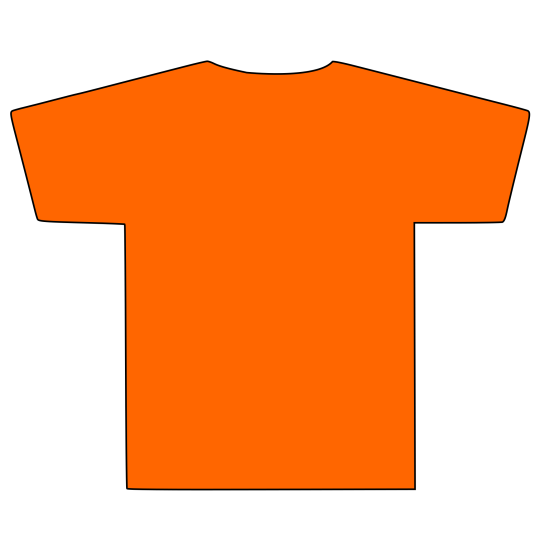
View On WordPress
#active engagement#animals#Arne Næss#awareness#biodiversity#Canada#Climate Action#collaboration#collective responsibility#Community Engagement#community of beings#community relationships#connection to land#conservation#cosmology#Cree worldview#CULTURAL HERITAGE#cultural significance#cultural values#deep ecology#deep ecology principles#ecological connections#ecological integrity#ecological knowledge#Ecological Restoration#Ecological Stewardship#ecological systems#Ecosystem Restoration#ecosystems#education
1 note
·
View note
Text
can "activists" please stop trying to fuck with the empty frames at the Gardner museum. this is the second time the museum has had to close early to keep that from happening
like. first of all, the art museum climate protests that have happened so far piss me off despite the fact that I agree with their overall goals, because the messages in interviews all boil down to "how DARE you VALUE ART when BAD THINGS ARE HAPPENING, ordinary museum-goer?!" but at least they've taken pains to not actually damage anything important (throwing soup on modern, sealed cases or glass barriers instead of the art itself, etc.)
the frames at the Gardner? are art in their own right. they are mostly very old and made by often-unacknowledged craftsmen who were incredibly talented. they're not the same as a modern barrier. AND they're there as a reminder of a time when some jerks stole art from the public so rich assholes could wall it up in private collections so only they got to enjoy it
like go puncture a CEO's tires or something that actually reaches the people responsible for this mess instead of ordinary humans (who probably already agree with you!) just trying to do the very Human Thing of appreciating art
EDIT: I double-checked, and last time their Thing was "why are people still talking about the Gardner heist, but NOBODY is talking about biodiversity loss?!?!?!"
which is just.
they are? just not usually in the same breath as an unsolved art theft case?
#mini-rant#isabella stewart gardner museum#and they're probably going to get all pissy on Twitter about how the museum is 'stifling their right to peaceful protest!!!'#except. you have the right to protest. you don't have the right to jeopardize the museum's property#last time this happened the museum let them protest outside without a peep of objection#(why are you protesting climate change outside an art museum but whatever go nuts)#and the entirety of this very blue and very climate-conscious city was collectively like '...seriously guys?'#it's possible to care about more than one thing at a time!
742 notes
·
View notes
Text
"When considering the great victories of America’s conservationists, we tend to think of the sights and landscapes emblematic of the West, but there’s also a rich history of acknowledging the value of the wetlands of America’s south.
These include such vibrant ecosystems as the Everglades, the Great Dismal Swamp, the floodplains of the Congaree River, and “America’s Amazon” also known as the “Land Between the Rivers”—recently preserved forever thanks to generous donors and work by the Nature Conservancy (TNC).
With what the TNC described as an “unprecedented gift,” 8,000 acres of pristine wetlands where the Alabama and Tombigbee Rivers join, known as the Mobile Delta, were purchased for the purpose of conservation for $15 million. The owners chose to sell to TNC rather than to the timber industry which planned to log in the location.
“This is one of the most important conservation victories that we’ve ever been a part of,” said Mitch Reid, state director for The Nature Conservancy in Alabama.
The area is filled with oxbow lakes, creeks, and swamps alongside the rivers, and they’re home to so many species that it ranks as one of the most biodiverse ecosystems on Earth, such that Reid often jokes that while it has rightfully earned the moniker “America’s Amazon” the Amazon should seriously consider using the moniker “South America’s Mobile.”
“This tract represents the largest remaining block of land that we can protect in the Mobile-Tensaw Delta. First and foremost, TNC is doing this work for our fellow Alabamians who rightly pride themselves on their relationship with the outdoors,” said Reid, who told Advance Local that it can connect with other protected lands to the north, in an area called the Red Hills.
“Conservation lands in the Delta positions it as an anchor in a corridor of protected lands stretching from the Gulf of Mexico to the Appalachian Mountains and has long been a priority in TNC’s ongoing efforts to establish resilient and connected landscapes across the region.”
At the moment, no management plan has been sketched out, but TNC believes it must allow the public to use it for recreation as much as possible.
The money for the purchase was provided by a government grant and a generous, anonymous donor, along with $5.2 million from the Holdfast Collective—the conservation funding body of Patagonia outfitters."
youtube
Video via Mobile Bay National Estuary Program, August 7, 2020
Article via Good News Network, February 14, 2024
#united states#alabama#estuary#wetlands#swamp#river#environment#environmental issues#conservation#video#biodiversity#american south#ecosystems#ecology#conservation news#wildlife conservation#ecosystem#conservation efforts#good news#hope#forest#swampco#re#Youtube
2K notes
·
View notes
Text
Existence Value: Why All of Nature is Important Whether We Can Use it or Not
I spend a lot of time around other nature nerds. We’re a bunch of people from varying backgrounds, places, and generations who all find a deep well of inspiration within the natural world. We’re the sort of people who will happily spend all day outside enjoying seeing wildlife and their habitats without any sort of secondary goal like fishing, foraging, etc. (though some of us engage in those activities, too.) We don’t just fall in love with the places we’ve been, either, but wild locales that we’ve only ever seen in pictures, or heard of from others. We are curators of existence value.
Existence value is exactly what it sounds like–something is considered important and worthwhile simply because it is. It’s at odds with how a lot of folks here in the United States view our “natural resources.” It’s also telling that that is the term most often used to refer collectively to anything that is not a human being, something we have created, or a species we have domesticated, and I have run into many people in my lifetime for whom the only value nature has is what money can be extracted from it. Timber, minerals, water, meat (wild and domestic), mushrooms, and more–for some, these are the sole reasons nature exists, especially if they can be sold for profit. When questioning how deeply imbalanced and harmful our extractive processes have become, I’ve often been told “Well, that’s just the way it is,” as if we shall be forever frozen in the mid-20th century with no opportunity to reimagine industry, technology, or uses thereof.

Moreover, we often assign positive or negative value to a being or place based on whether it directly benefits us or not. Look at how many people want to see deer and elk numbers skyrocket so that they have more to hunt, while advocating for going back to the days when people shot every gray wolf they came across. Barry Holstun Lopez’ classic Of Wolves and Men is just one of several in-depth looks at how deeply ingrained that hatred of the “big bad wolf” is in western mindsets, simply because wolves inconveniently prey on livestock and compete with us for dwindling areas of wild land and the wild game that sustained both species’ ancestors for many millennia. “Good” species are those that give us things; “bad” species are those that refuse to be so complacent.
Even the modern conservation movement often has to appeal to people’s selfishness in order to get us to care about nature. Look at how often we have to argue that a species of rare plant is worth saving because it might have a compound in it we could use for medicine. Think about how we’ve had to explain that we need biodiverse ecosystems, healthy soil, and clean water and air because of the ecosystem services they provide us. We measure the value of trees in dollars based on how they can mitigate air pollution and anthropogenic climate change. It’s frankly depressing how many people won’t understand a problem until we put things in terms of their own self-interest and make it personal. (I see that less as an individual failing, and more our society’s failure to teach empathy and emotional skills in general, but that’s a post for another time.)
Existence value flies in the face of all of those presumptions. It says that a wild animal, or a fungus, or a landscape, is worth preserving simply because it is there, and that is good enough. It argues that the white-tailed deer and the gray wolf are equally valuable regardless of what we think of them or get from them, in part because both are keystone species that have massive positive impacts on the ecosystems they are a part of, and their loss is ecologically devastating.
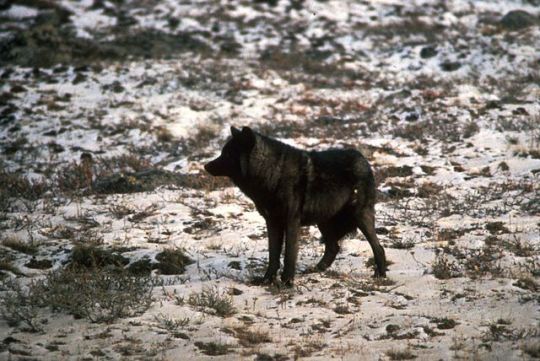
But even those species whose ecological impact isn’t quite so wide-ranging are still considered to have existence value. And we don’t have to have personally interacted with a place or its natural inhabitants in order to understand their existence value, either. I may never get to visit the Maasai Mara in Kenya, but I wish to see it as protected and cared for as places I visit regularly, like Willapa National Wildlife Refuge. And there are countless other places, whose names I may never know and which may be no larger than a fraction of an acre, that are important in their own right.
I would like more people (in western societies in particular) to be considering this concept of existence value. What happens when we detangle non-human nature from the automatic value judgements we place on it according to our own biases? When we question why we hold certain values, where those values came from, and the motivations of those who handed them to us in the first place, it makes it easier to see the complicated messes beneath the simple, shiny veneer of “Well, that’s just the way it is.”
And then we get to that most dangerous of realizations: it doesn’t have to be this way. It can be different, and better, taking the best of what we’ve accomplished over the years and creating better solutions for the worst of what we’ve done. In the words of Rebecca Buck–aka Tank Girl–“We can be wonderful. We can be magnificent. We can turn this shit around.”
Let’s be clear: rethinking is just the first step. We can’t just uproot ourselves from our current, deeply entrenched technological, social, and environmental situation and instantly create a new way of doing things. Societal change takes time; it takes generations. This is how we got into that situation, and it’s how we’re going to climb out of it and hopefully into something better. Sometimes the best we can do is celebrate small, incremental victories–but that’s better than nothing at all.
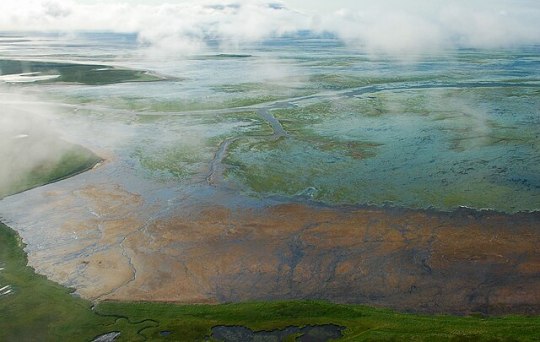
Nor can we just ignore the immensely disproportionate impact that has been made on indigenous and other disadvantaged communities by our society (even in some cases where we’ve actually been trying to fix the problems we’ve created.) It does no good to accept nature’s inherent value on its own terms if we do not also extend that acceptance throughout our own society, and to our entire species as a whole.
But I think ruminating on this concept of existence value is a good first step toward breaking ourselves out first and foremost. And then we go from there.
Did you enjoy this post? Consider taking one of my online foraging and natural history classes or hiring me for a guided nature tour, checking out my other articles, or picking up a paperback or ebook I’ve written! You can even buy me a coffee here!
#nature#natural history#ecology#wildlife#animals#environment#environmentalism#conservation#existence value#deep ecology#science#scicomm#environmental philosophy#climate change
573 notes
·
View notes
Text
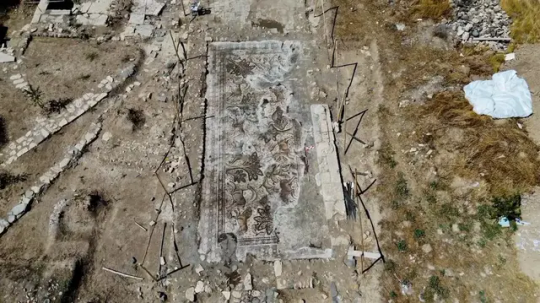
A Massive Roman Mosaic Found in Turkey
A monumental discovery has been made in Elazig, Türkiye, where an 84-square-meter mosaic from the Late Roman and Early Byzantine period has been unearthed, marking a significant first for the country.
The mosaic was accidentally found by local farmer Mehmet Emin Sualp while digging a hole to plant saplings. Noticing distinctive patterns beneath the surface, he reported his findings to the Elazig Museum Directorate and local authorities. Subsequent investigations confirmed that the intricate floor mosaic dates back to the Roman and Early Byzantine eras.
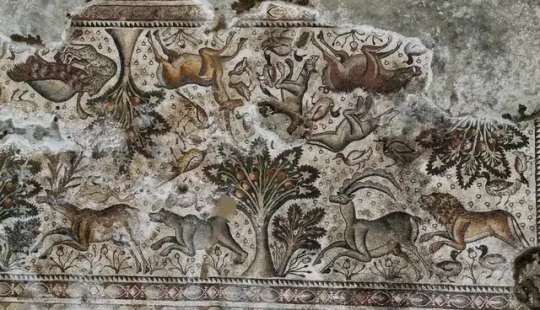
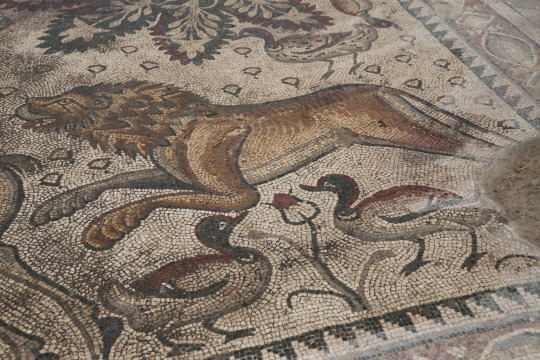
Unique features:
What sets this mosaic apart is not only its size but also its artistic detail. Featuring a variety of animal and plant depictions, including lions, mountain goats, ducks, and trees, the mosaic is noted for its unique borders and geometric patterns.
Elazig Governor Numan Hatipoglu described it as one of the largest mosaic pieces discovered in the region, showcasing a vibrant representation of local wildlife and flora.
In collaboration with the Ministry of Culture and Tourism, excavation and rescue operations were launched, leading to the careful uncovering of the mosaic. The ongoing efforts have revealed additional historical structures, including a church and a wine cellar, suggesting a rich archaeological site in Salkaya village, located just 14 kilometers from Elazig city center.




“This is an incredible find for our region,” stated Governor Hatipoglu. “The vibrant representation of local fauna, including bears, wild boars, and various deer species, vividly reflects the area’s biodiversity during the Roman and Byzantine periods.” He emphasized the significance of this discovery and indicated that further excavations could reveal even more historical artifacts, potentially leading to a strategic development for exhibitions in the future.
Farmer’s journey to ancient mosaic’s discovery
Mehmet Emin Sualp, who purchased the land for ₺120,000 ($3,500) in 2020, expressed astonishment at the value of his find.
“I noticed the mosaic while planting. Since then, I’ve been involved in the excavation work. It’s impossible to assign a monetary value to this discovery now. The museum will know best what this site is worth,” he remarked, highlighting the importance of preserving such archaeological treasures.
This groundbreaking discovery not only enhances our understanding of Türkiye’s rich historical landscape but also underscores the significance of archaeological heritage in the region.
The mosaic is expected to attract attention from researchers and tourists alike, placing Elazig on the map as a key location for historical exploration.
#A Massive Roman Mosaic Found in Turkey#Elazig Türkiye#mosaic#ancient artifacts#archeology#archeolgst#history#history news#ancient history#ancient culture#ancient civilizations#roman history#roman empire#byzantine#roman art#ancient art#art history
62 notes
·
View notes